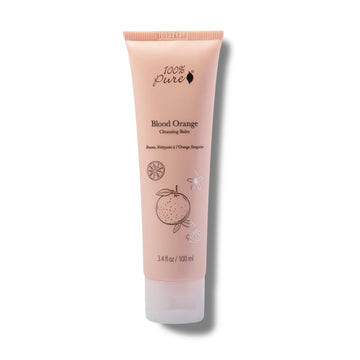How does cleansing oil work, and is it right for you?
Written by: 100% PURE®
When the beauty world offers every lip tint, foundation, and SPF you could ever ask for and more, it can be easy to forget about the part where we need to take it off. One thing is for sure, though: makeup wipes are history. As you may already know, they can drag against the skin, contribute to massive landfill waste, and they don’t even really work.
Thankfully, we can all still count on micellar cleansing water and a trusty reusable cotton pad when we’re too tired to remove our makeup. But it’s not always enough for a truly thorough cleanse. That’s where cleansing oil and makeup oil remover come in!
Oil cleansing might sound contradictory. However, it’s actually one of the most gentle and effective cleansing methods for makeup, skin care, and environmental pollutants. Here’s why!
So, what exactly is a makeup oil remover, and how does cleansing oil work? Believe it or not, oil cleansing can be an effective method for all skin types, including oily and acne-prone skin. Why is that? This has a lot to do with a concept in chemistry known as polarity.
And if it’s been a minute since your last chem course, don’t worry. We won’t be quizzing anyone on polar and nonpolar molecules.
The theory of polarity boils down to like attracting like. For example, water attracts water, and oil attracts oil. Have you ever tried washing butter off your hands with just water? It doesn’t work! Dish soap, however, will take it right off.
Similarly, an oil makeup remover will attract the oil in your pores like a magnet. On top of that, oils are emollient, which helps to moisturize and soften the skin. This makes them not only effective but also far gentler on the skin than a harsh scrub or drying alcohol.
We’re about to talk about the two hottest makeup oil removers right now: cleansing oils and cleansing balms.

When we talk about makeup oil removers, we’re typically referring to cleansing oils and cleansing balms. But what’s the difference? Is one better than the other?
A cleansing oil is a liquid form of oil makeup remover. It has the same kind of consistency as the plant-based oils you use with food, like avocado, sunflower, and olive. And, in many formulas, such oils may even be included.
Cleansing oils usually come with a pump. That makes it easy to dispense and apply to remove sunscreen, makeup, and any impurities collected during the day.
A cleansing balm, on the other hand, is a makeup oil remover that comes in a more solid form. It’s designed to scoop out and warm up a little in the hands, and then massage into the face. Some cleansing balms are a bit more solid and waxy, while others have a more whipped, sorbet-like consistency, like our Blood Orange Cleansing Balm.

Step 1:
Apply your cleansing balm or cleansing oil to dry skin, gently massaging in small circles to break down makeup and sunscreen.
Step 2:
Continue massaging the oil into your skin until it begins to emulsify.
Step 3:
Take a water-based gel cleanser and apply it to your face over the oil, continuing to massage. When the gel cleanser begins to attract the oil, add a small amount of warm or lukewarm water to start rinsing your skin.
Step 4:
Continue splashing more water onto your skin until no cleanser remains. Then, pat dry with a clean towel.
Step 5:
Follow up with your skin care as normal.
The idea behind a gel cleanser as a second step is that while oil cleansers clear away oil, dirt, and makeup, the gel cleanser helps eliminate residue from the balm to keep the skin clean. But do all of us need that second cleanse?
In short, sometimes. This will depend on the user’s skin type, as well as the cleanser itself and what it’s removing.
For instance, if you spent the day with a smokey eye and waterproof mascara, a cleansing balm won’t be enough to take away all of the pigment. In that case, that second step is going to make a huge difference.
On the other hand, there are extra-creamy cleansing balms out there that come off fine with a damp cloth. One example of that is our super-luxe, antioxidant-rich Matcha Cleansing Balm. Further, those with dry skin might find the second cleansing step to be too stripping and may benefit more from keeping the nourishing oils on their skin while they sleep.
As with anything in skin care, it all comes down to understanding what your skin needs, and finding the product that caters to it best.
- Tags: January-2022, Skin Care
We carefully hand-select products based on strict purity standards, and only recommend products we feel meet this criteria. 100% PURE™ may earn a small commission for products purchased through affiliate links.
The information in this article is for educational use, and not intended to substitute professional medical advice, diagnosis, or treatment and should not be used as such.





